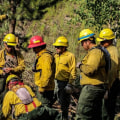The Louisiana Department of Health (LDH) is responsible for protecting and promoting health and ensuring access to medical, preventive and rehabilitation services for all citizens of the state. Louisiana schools are also responsible for the safety and care of students during emergency situations, such as natural disasters or other potential hazards. To this end, all Local Education Agencies (LEAs) are encouraged to designate an emergency preparedness and recovery contact point. This contact acts as the person responsible for entering and maintaining emergency preparedness and recovery information for the LEA. In the event of an impending emergency, the Louisiana Department of Education (LDOE) will contact the designated emergency preparedness and recovery representative to remind them to complete and maintain the emergency preparedness and recovery panel (coming soon).
The Department of Children and Family Services (DCFS) is responsible for managing state shelters for people with critical transportation needs, shelters for people with special medical needs, shelters for sex offenders, and shelters for unaccompanied minors, while providing staff and resources to shelters for the general population who request it. Hospital visits for conditions sensitive to ambulatory care (ACS) are a measure to identify groups that did not receive adequate and timely access to care during the emergency response. The Emergency Management Institute offers self-paced courses designed for people with emergency management responsibilities and for the general public. The document on the rural health service delivery system evaluation tool provides rural health leaders with a systematic approach to evaluating the preparedness and response of their health system to emergencies. The hospital will contact Region 5, the Designated Regional Coordinator (DRC) or the parish office of the Office of Emergency Preparedness (OEP) to obtain and replace the medications and related supplies that will be needed during the response and recovery phase of an emergency, including access and distribution of shelters that may be accumulated by its branches or local, state or federal sources. Access the six-step School Emergency Preparedness and Management (REMS) process to create plans to continuously build and promote safe and healthy school communities before, during, and after potential emergencies.
The moment the Emergency Management Plan is activated, people assigned to security functions will be responsible for closing all exits and entrances, with the exception of the ambulance entering. The specific health care needs of populations affected by the emergency or disaster may differ between the response phase and the recovery phase. In accordance with the State Emergency Operations Plan, the Louisiana Department of Children and Family Services has the primary responsibility to coordinate with local, parish and tribal governments, state and federal entities, support agencies, and non-governmental organizations to address the needs of mass non-medical care, emergency assistance, housing, and human services of disaster victims. The REMS Technical Assistance Center website contains free resources, training, and technical assistance (TA) for schools and their community partners, including many tools and resources on emergency planning and responding to infectious disease outbreaks. The lessons learned from implementing the vaccine during an emergency response can improve strategies for distributing and administering vaccines to prevent future outbreaks of infectious diseases. Louisiana requires all public elementary and secondary schools to prepare, maintain and implement a crisis management and response plan to help ensure that all students, teachers and school employees are in a safe facility and prepared to respond in the event of an emergency incident or disaster.






